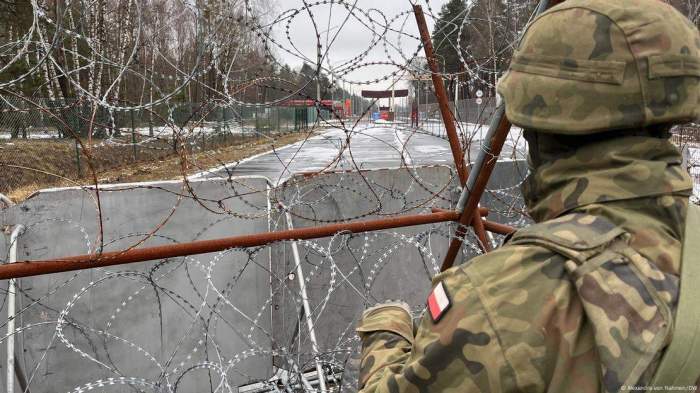
Image: Alexandra von Nahmen/DW
Thick concrete blocks, each weighing 1.7 tons, block the access road to the Polowce-Peschatka border crossing in northeastern Poland. A Polish border guard proudly remarks, “Not even two tanks could move them away,” News.az reports citing Deutsche Welle.
A lot of barbed wire has been stretched between the concrete barriers. Behind is a narrow path that winds along a 5.5-meter (18-foot) high border fence. The cameras, heat sensors, underground cables — everything is very modern. Officially, no one can cross the border here anymore. The checkpoint has been closed since the summer of 2023.
A 186-km border fence
Poland has reacted to the increasing number of people trying to cross its border with Belarussince August 2021 by building a fence with an electronic surveillance system that stretches over 186 kilometers (116 miles).
Migrants and refugees are thought to have been encouraged and supported by the regime in the Belarusian capital Minsk, one of Russia’s closest partners.
“The biggest threat we currently face here is irregular migration orchestrated by Belarus,” said Colonel Andrzej Stasiulewicz, deputy commander of the Podlaski Border Guard Division. He explained that people arrived legally in Belarus from Afghanistan, Syria or Iraq and were then taken to the border with Poland for $8,000 to $12,000 (ca. €7,775 to 11,650).
Stasiulewicz used surveillance videos to show DW how this works in practice. One showed a Belarusian officer dropping off a group of people at night, directly at the border, at a place where there is only barbed wire. But there is a river that forms a natural border between Poland and Belarus.
Another video showed people on the Belarusian side of the border throwing stones and burning branches at the border fence. “Belarus wants the situation to escalate,” said Stasiulewicz. “We want to deescalate.”
Human rights activists criticize buffer zone
Is the fence helping? Yes, said the Polish border guards in Polowce. They also praised the buffer zone that had been set up in the border region. The aim is to prevent human traffickers from getting close to the border and picking up migrants at agreed meeting points.
Human rights organizations have criticized the buffer zone, saying that it also makes it difficult for them to access people who might be stranded in the forest for reasons of injury or illness and in need of medical assistance.
There have been repeated attempts to saw through sections of the fence. Brigadier General Robert Bagan, the commander-in-chief of the Polish Border Guard, picked up a small thin saw that had been confiscated at the border and explained that if larger battery-operated devices were used, the fence could be cut in six to eight minutes.
Last year, almost 30,000 people tried to cross the border into Poland from Belarus, despite the ongoing modernization of the barriers and fences.
According to official figures, more than 2,685 people applied for asylum. A center has been set up in Polowce to process the applications. There is a small family there with a play corner for children. But most of those arriving here are men travelling alone.